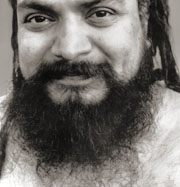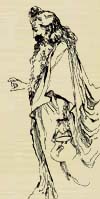Shivabalayogi on the Yoga Vasishta
Shivabalayogi often described himself as a practical yogi. Instead of intellectualizing spirituality, he encouraged people to practice meditation. Instead of giving discourses, he gave actual experiences. Even so, he placed a great value on Yoga Vasishta. Over four decades, he often recommended the book to devotees.
Swamiji said that Yoga Vasishta, unlike other scriptures, preserves the original teachings of a yogi. Other scriptures — Swamiji specifically mentioned the Bible, Ramayana, and Mahabharata — are perhaps only ten percent accurate. The rest is made up, either through devotional enthusiasm or to satisfy religious politics. See Shivabalayogi quotes about Scriptures.
As early as around 1958 or 1959, Shivabalayogi recommended the book to two devotees, Rumale Chennabasaviah and M. G. Kabe. Shivabalayogi was still in tapas, meditating in samadhi continuously for twelve hours every day. Rumale and Kabe had permission to meditate in Swamiji’s presence in the evening and mornings. They spent their days in nearby Draksharama, resting, taking food and reading Yoga Vasishta.
Gen. Hanut Singh met Shivabalayogi in Dehradun and was quickly drawn into the regular practice of meditation. He had questions about his own experiences on the spiritual path and talked with Swamiji about them. Swamiji’s answers became material for the biography that Gen. Hanut assembled, Spiritual Ministration, first published in 1981. In that book, Gen. Hanut quotes Swamiji, “Read the Yoga Vasishta. Swamiji’s philosophy is fully expounded in that scripture.”
Spiritual Ministration includes a chapter on “Mission and Upadesa [Spiritual Guidance]”, which is a short synopsis of Yoga Vasishta. That chapter ends with the encouragement: “Those who wish to know more about the profound teachings embodied in this Scripture, particularly with a view to gaining a better understanding of Sri Swamiji’s Teachings, would do well to make a more detailed study of the Yoga Vasishta.”
In the United States almost two decades later, we read Spiritual Ministration and learned about the connection between Shivabalayogi and Yoga Vasishta. Our curiosity about the book was also aroused by Swamiji himself. For example, Swamiji told devotees about his consecration of the Brahma-Vishnu-Maheshwara temple in the Bangalore ashram and how his consecration of the idol to God Brahma, the Creator, removed a curse by Shiva. When asked about Brahma, he said, “You should read the history of Brahma.” He was asked whether there was any particular book that he recommended. “Yes, the Yoga Vasishta.”
We had conversations with Swamiji about atom bombs. He would warn us of the dangers of nuclear war and how one of the reasons he completed tapas was to use the powers to prevent such a war from breaking out. “This is not the first time people have made atomic bombs. This happened many thousands of years ago and many millions of years ago. If you study history you will come to understand. If you read the Yoga Vasishta you will come to know about that.”
On another occasion, Shivabalayogi was asked about avatars. “Read the Yoga Vasishta,” he said, “and you will learn how yogis make avatars and how Rama acquired his powers from yogis.”
Swamiji revealed that he had incarnated during each major avatar of Vishnu, God the Sustainer, which occurs every five thousand years. The last such avatar was Krishna, and the one before that was Rama. Swamiji added that he was a witness to the events described in Yoga Vasishta when Sage Vasishta gave spiritual instruction to the young Rama.
Even in the United States, we knew that Shivabalayogi discouraged intellectualizing about spirituality, so for Swamiji to recommend any spiritual book really stood out. Swamiji mentioned Yoga Vasishta often enough that many of us began to think that he was Sage Vasishta.
![]()
Yoga Vasishta HOME page | PREVIOUS PAGE | NEXT PAGE

